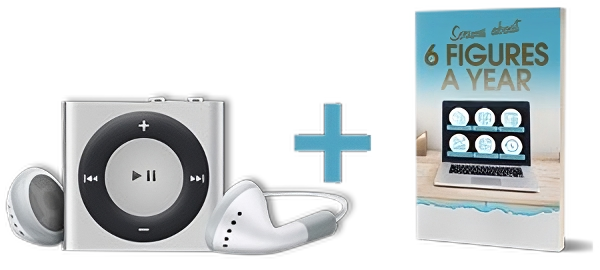Life After Cookie Death: The Smart Marketer’s Survival Guide
 The cookie crumbled.
The cookie crumbled.
The digital cookie, that is.
As privacy concerns have intensified, third-party cookies—the little tracking devices that followed you across the internet like a shadow—are slowly being phased out. This means social media marketers are facing a world where tracking users through cookies will no longer be an option, at least not the way it used to be.
But here’s the thing: While the cookie monster might be gone, the opportunity to target your ideal audience hasn’t vanished. It’s just evolving. And that’s good news for marketers.
The challenge now is how to navigate this post-cookie landscape and still get the laser-targeted reach we crave.
So, how do we stay on track without the trusty cookie crumbles?
What’s Changed and Why It Matters
Let’s get this out of the way first: Cookies were like the bread crumbs that led marketers to the trail of consumer behavior. They helped brands track website visits, purchases, and interactions to deliver personalized ads.
But, thanks to rising concerns about data privacy and regulations like the GDPR and CCPA, cookies are being phased out, particularly third-party cookies.
Now, instead of tracking someone’s every move as they bounce from website to website, marketers need to rethink how they gather and use data. It’s not about being creepy; it’s about being smarter.
In the post-cookie era, marketers need to get creative with how they engage with audiences while respecting privacy. Think of it like dating—no more stalking; it’s all about mutual trust and shared interests.
Embrace First-Party Data: Your New Best Friend
First-party data is the new cookie. This is the data you collect directly from your audience—think email sign-ups, interactions on your social media posts, website visits, and product purchases.
When done right, first-party data is gold. It’s like having a direct line to your audience’s preferences, behaviors, and interests, which is precisely what you need to keep the personalized marketing magic alive.
According to a report by Econsultancy, 74% of marketers believe first-party data is the most important data type for digital marketing.
So, if you haven’t already, now’s the time to start collecting data from your own audience—without relying on those third-party cookie crumbles.
Contextual Targeting: Catching People at the Right Moment
Without cookies, you can’t track every move of your audience. But you can still target them based on the content they’re consuming.
Enter contextual targeting. This is like showing up with the right gift at the perfect time—relevant content at the right moment.
For example, if someone is watching a YouTube video about home décor, you can target them with ads for furniture or interior design services. No tracking required, just matching their interest with your offering.
Contextual targeting is all about focusing on the environment and content around a user’s interaction rather than tracking their individual behavior across multiple sites.
A study by Google found that contextual targeting can increase ad engagement by up to 30%. That’s a solid win in a post-cookie world.
Invest in First-Party Data Platforms and CRM Tools
In the post-cookie world, it’s critical to have a robust customer relationship management (CRM) system that allows you to understand and manage the data you collect. Platforms like HubSpot, Salesforce, and others enable marketers to store and analyze first-party data to create detailed customer profiles.
These platforms allow for deeper segmentation, which means you can still target your audience with personalized, relevant content, even without cookies.
It’s like upgrading from a simple paper map to a GPS system—way more precise and much less chance of getting lost.
Partnering with Influencers: A Non-Cookie Approach to Trust-Building
Influencer marketing is another tool that thrives in the post-cookie era. Why? Because influencers have a direct line to their audience. Their followers trust their recommendations and are more likely to engage with content that’s relevant to them. With influencers, you’re not relying on cookies to build an audience—you’re working with someone who already has one.
By leveraging the trust influencers have cultivated with their followers, you can run effective campaigns without needing to rely on tracking data. It’s like teaming up with the cool kid in class who already knows everyone and can help you get your message across.
Privacy-First Targeting: Building Trust Without Compromising
Privacy isn’t just a buzzword anymore. It’s a requirement. And, as marketers, we need to respect it. In fact, 81% of consumers say they have little to no control over the data companies collect on them.
If brands don’t address privacy concerns, they’ll lose trust—and trust is the cornerstone of any marketing strategy.
Start by offering transparent data policies, letting consumers know what data you’re collecting and how it’s used. Additionally, offer value in exchange for personal information, like discounts or free resources. When customers feel they’re getting something valuable in return for their data, they’re more likely to share it willingly. It’s a little like asking for a date: Don’t be creepy, be genuine and offer something they want.
Leveraging AI and Machine Learning: Smarter Targeting with Less Data
As marketers, we need to make the most of the data we can collect, and artificial intelligence (AI) and machine learning (ML) are here to help. These tools can analyze first-party data at scale, predict consumer behavior, and identify patterns to help you target your audience more effectively.
AI can optimize your ad spend by targeting users based on their likely intent, even without third-party cookies. It’s like having a crystal ball that helps you make smarter, data-driven decisions based on less data. The more you feed it, the smarter it gets.
The Power of Social Media Algorithms
Social media platforms have always been rich with data, but as we move beyond cookies, social platforms like Facebook, Instagram, and LinkedIn are increasingly relying on AI-driven algorithms to deliver the most relevant content to users.
These algorithms use first-party data from users’ interactions on the platform to serve them ads that are most likely to interest them.
In this new era, the key to success on social media is creating engaging content that resonates with your audience. If your content is valuable and compelling, the algorithm will do much of the work for you—targeting your ideal audience without cookies.
It’s like catching a fish with the perfect bait—you don’t need to chase it around the pond when you’ve got the right lure.
Bottom Line: Keep Adapting and Stay Ahead
The post-cookie era might feel like a curveball, but with the right strategies in place, you can continue to target your audience effectively while respecting privacy.
First-party data, contextual targeting, influencer partnerships, and AI-driven insights are your new best friends. As the digital world evolves, so must your tactics.
So, ditch the cookies, embrace the change, and keep adapting—because in the world of marketing, those who adapt are the ones who thrive.
After all, cookies may crumble, but a solid marketing strategy will always stand tall.
Claim Your Free MP3 And PDF Training: The 3-Part Plan To Topping $100,000 Per Year In Profit
Enter your name and email address below to receive a new lesson delivered to your inbox once a week. Your first lesson will be delivered immediately.

Privacy Policy : We value your privacy. You can unsubscribe from receiving future emails with 1 click at any time.























